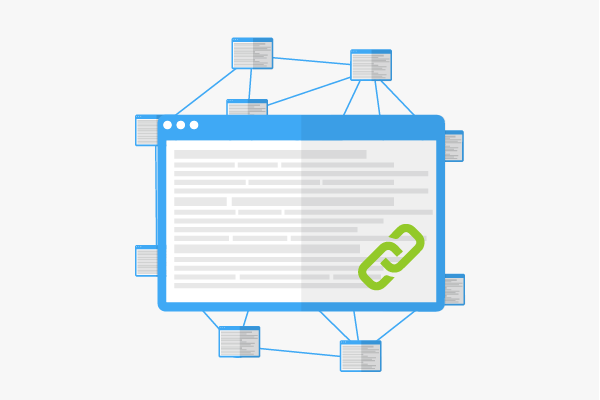OffPage Optimization
Off-page optimization entails building the reputation of a website. This can hardly be achieved through changes on a website as is the case with on-page optimization. Instead, the reputation of a page is determined primarily by backlinks. These are links that point to one’s own website from another. Search engines such as google consider the amount of incoming links for ranking. An important element of OffPage Optimization is link building, with which the widest possible network of recommendations from other websites is developed through backlinks.
Link building
Link building is the structuring of a number of quality and topic-relevant backlinks to improve the ranking of a website.
Quantitative factors
Generally the more backlinks a page has, the higher its popularity is. There are several methods to achieve this. According to statements of Google, the best method is to simply do nothing. As long as the content of a website has an added value for users, the users themselves will recommend the page further in the form of backlinks. The other methods, which include reciprocal link exchange, blog comments, link purchase, or entries in web catalogues, are rather discouraged since artificially generated links violate Google’s policies. Through diverse updates of the algorithm, Google tries to detect these methods and penalize them where applicable. The quantitative factors give an overview of a website’s linking and, hence, its popularity. Quantity is, however, not sufficient as an evaluation parameter since these methods are very vulnerable to manipulation.
Qualitative factors
In order to correctly interpret and evaluate the backlinks that point to a website, search engines also assess the quality of these links.
- One important point is the content relevance. In particular, Google’s advanced algorithm quickly detects if the linked websites have any thematic relevance in relation to the target website. Lack of substantive relationship in the context can lead to a lower assessment of the link.
- The anchor text, also called link text, is the clickable part of a hyperlink and is, therefore, another crucial criterion. For instance, if a website is linked with “great website” as the link text, the search engine can make no reference to the target of the hyperlink. It is hereby recommended to use a keyword or a combination of relevant terms in the link text via which the target website wants to be found. However, there is a risk that Google will interpret this linking as unnatural, and the landing page could be penalized.
- In addition, the position of the link on the website is also relevant. The highest rated links are probably located right in the content in a substantive context. Thus, backlinks that are placed in the header or navigation of a website are rated poorly or not considered for the ranking. In the worst case, these links could be interpreted as spam.
- It should also be noted that links that contain the rel=“nofollow” attribute are rather worthless for the linked website since crawlers of the search engine do not have to follow these backlinks and most likely do not.
- Too rapid link building, as through the aforementioned methods such as link purchase, should be avoided. This mostly results in a probable artificial link profile that is detected and penalized by search engines.
Relevance for Search Engine Optimization
OffPage optimization through building links has become a very difficult discipline today, as every unnatural link build-up can damage a website in terms of loss of ranks. For this reason, it is generally recommended to generate backlinks via high quality content. Blogs, magazine, infographics or other content that can be shared with users with a backlink can be useful for offpage optimization. Moreover, there is a constant discussion in SEO circles regarding how strongly the traffic generated via a backlink influences the value of such links.

